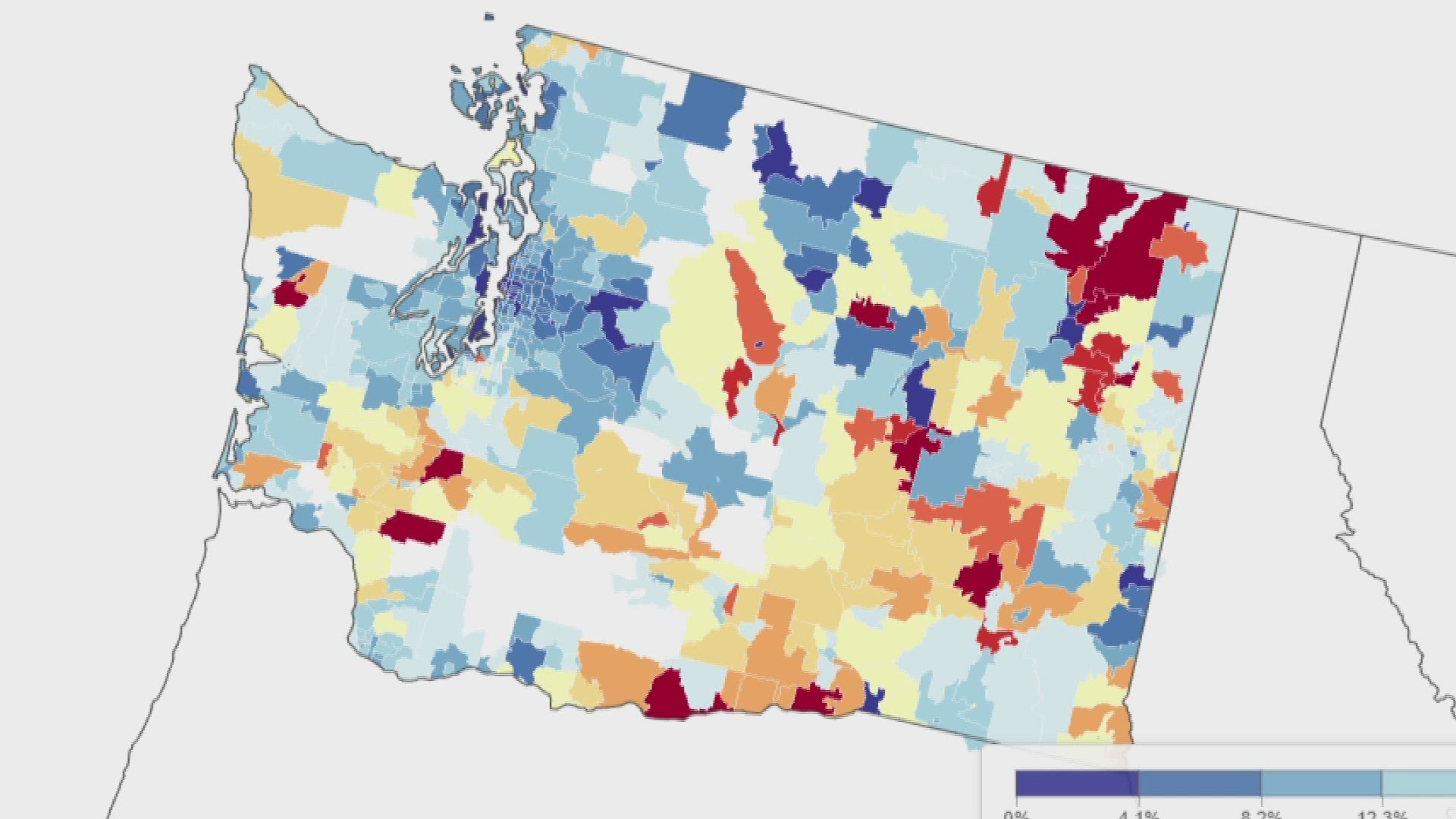KING COUNTY, Wash. — A new tool developed by the University of Washington’s Institute for Health Metrics and Evaluation (IHME) and the COVID Collaborative allows researchers to track vaccine hesitancy by county and zip code.
The tool aims to help health leaders target education and resources toward neighborhoods that need them the most.
Click here to view the interactive map. A tab in the upper left of the website allows users to adjust the map settings and switch between showing data by county or zip code. Users can also focus on a specific state.
The map shows there is a lot more vaccine hesitancy in rural areas, like many places in eastern Washington, than in more urban areas, like King County.
But even in King County, there are some disparities. For example, south King County has higher percentages of hesitancy than central King County.
More diverse, lower-income areas tend to have higher rates of vaccine hesitancy. Nearly 17% of Kent’s population is vaccine-hesitant, equating to about 22,000 people. Federal Way is similar with nearly 18%, which is about 17,000 people.
On the other side of the spectrum are more affluent areas like Mercer Island with only 4% hesitancy, and Eastlake with only 3%.
“In highly white populated areas, vaccination coverage is much higher, and vaccine hesitancy is lower,” said Dr. Ali Mokdad with IHME. “And part of it is when we worked on developing the vaccine, we didn't involve minority community, and it came later like this is a vaccine come and get it. That's not the right way to do it. You need to involve the communities early on, explain what you are doing why it's very important.”
The map will help health leaders bring resources like education and access to vaccines into neighborhoods facing high rates of hesitancy.
“We need to work in these communities, reach out to them, to their leaders, churches, mosques, whatever it takes in order to make sure we make the vaccines available in a very safe location, accessible location, that people can come and get the vaccine," explained Mokdad.

